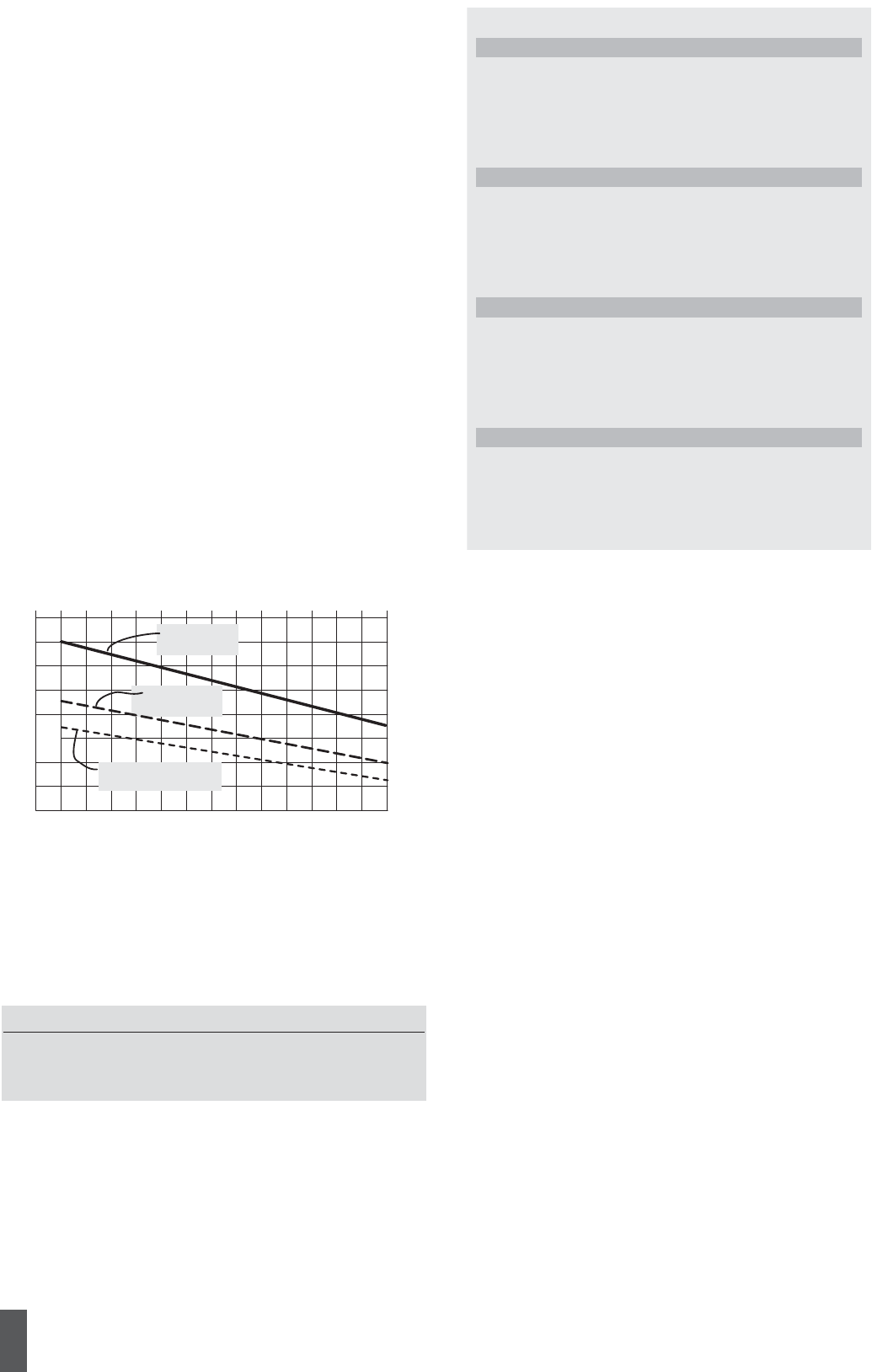
32
GB
Training and Operating Instructions
Training Instructions
Sports medicine and training science use ergometry, among
other things, for the examination of the functional capability of
heart, circulation and respiratory system.
You can find out whether or not you have achieved the desired
effect from your training after several weeks using the following
method:
1. You manage a particular endurance performance with less
heart / circulation performance than previously
2. You sustain a particular endurance performance with the
same heart / circulation performance over a longer period.
3. You recover more quickly than previously after a particular
heart / circulation performance.
Guide values for the endurance training
Maximum pulse: maximum strain means the reaching of the
individual maximum pulse. The maximum achievable heart rate
is dependant on age.
Here, the following empirical formula applies: the maximum
heart rate per minute corresponds to 220 heart beats minus
age in years.
Example: age 50 years -> 220 – 50 = 170 pulse / min.
Load Intensity
Load pulse: the optimum intensity of load is reached at 65–75%
(see also diagram) of the maximum pulse. This value changes
depending on age.
Extent Of Load
Duration of a training unit and its frequency per week:
The optimum extent of load is attained, if 65–75% of the
individual heart / circulation performance is achieved
over a longer period.
Empirical Formula:
The beginner’s training can be planned as follows in the first 4
weeks:
Training frequency Duration of training
daily 10 minutes
2–3 times a week 20–30 minutes
1–2 times a week 30–60 minutes
Pulsediagramm
Fitness and Fat Burner
220
200
180
160
140
120
100
80
Pulse
Age
20 25 30 35 40 45 50 55 60 65 70 75 80
Maximalpulse
(220 minus Age)
Fitnesspulse
(75% of Max.Pulse)
Fat combustion pulse
(65% of Max.Pulse)
90
It is recommended that you perform approx. 5 minutes of exer-
cises before and after every training unit, in order to warm up
and cool down. There should be a training-free day between
each two consecutive training units, if you prefer training sessi-
ons of 20-30 minutes 3 times a week later on in your training.
Otherwise, there is no reason why you should not train daily.
Glossary
Recovery
Recovery pulse measurement at the end of the training. From
start and end pulse of one minute the deviation and a fitness
grade are determined. With the same training, the improvement
of this grade is a measure for fitness increase.
Reset
Deletion of the display contents and restart of the display.
Programs
Possibilities for training, which require manual or program-deter-
mined loads or target pulses.
Profiles
Change of loads over time or distance represented in the points
field.
Dimension
Units for display of km/h or mph, kjoule or kcal
Energy
Calculates the energy turnover of the body
Control
The electronic equipment controls the load or the pulse for
manually entered or default values.
Points field
Display section with 25 x 16 points for representation of load
and pulse profiles as well as text and value display.
Pulse
Recording of the heartbeat per minute
Training frequency Extent of training session
3 times a week 2 minutes of training
Break of 1 minute for physical exercises
2 minutes of training
Break of 1 minute for physical exercises
2 minutes of training
3 times a week 3 minutes of training
Break of 1 minute for physical exercises
3 minutes of training
Break of 1 minute for physical exercises
2 minutes of training
3 times a week 4 minutes of training
Break of 1 minute for physical exercises
4 minutes of training
Break of 1 minute for physical exercises
3 minutes of training
3 times a week 5 minutes of training
Break of 1 minute for physical exercises
4 minutes of training
Break of 1 minute for physical exercises
4 minutes of training
4th week
3rd week
2nd week
1st week


















